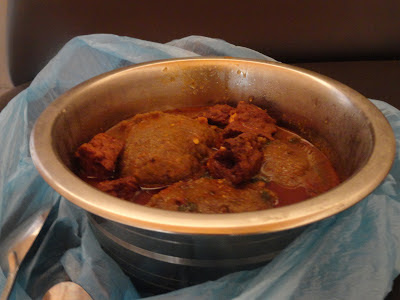To get by in Bariba territory, you really only need to know two words: 'oo' (yes) and 'alafia' (well).
[Quick notes:
Pronunciation: 'oo' is /oh/ and 'alafia' is /uh-LAW-fee-uh)
I replaced all special characters and accents with their closest English equivalents.]
For any greeting that starts with 'ka', you can respond with 'oo':
"Ka sonhon" (Good afternoon)
- Response: "Oo"
"Ka yoka" (Good evening)
- Response: "Oo"
"Ka weru" (Happy arrival - used when a person is coming towards you)
- Response: "Oo"
"Bee ka sonhon" / "Bee ka yoka" / "Bee ka weru" (the above greetings when addressing multiple people)
- Response: "Oo"
'Good morning' is the only main greeting that doesn't use 'ka'. Instead, it is asked as a question and the answer is 'alafia' (well):
"A kpunan do?" (How did you wake up?)
- Response: "Alafia"
"I kpunan do?" (like above but asked to multiple people)
- Response: "Alafia"
After the greeting often comes a series of questions in the form 'How is your...?' The response is always 'alafia':
"Anna wasi?" (How is your health?)
- Response: "Alafia"
"Anna yenu?" (How is your family?)
- Response: "Alafia"
"Anna wunen duro?" (How is your husband?)
- Response: "Alafia"
"Anna bii?" (How is your child?)
- Response: "Alafia"
"Anna soburu?" (How is your work?)
- Response: "Alafia"
I used to systematically respond "alafia" every time I heard a phrase that started with 'anna', but then I figured out that sometimes the phrase actually began with 'a na', meaning 'come'. For instance, I am often invited to "come eat": "A na di." So listen carefully!
There you go! With just two words, 'oo' and 'alafia', you can answer a Bariba's greeting and charm him with your local language skills. Good luck!
[Quick notes:
Pronunciation: 'oo' is /oh/ and 'alafia' is /uh-LAW-fee-uh)
I replaced all special characters and accents with their closest English equivalents.]
For any greeting that starts with 'ka', you can respond with 'oo':
"Ka sonhon" (Good afternoon)
- Response: "Oo"
"Ka yoka" (Good evening)
- Response: "Oo"
"Ka weru" (Happy arrival - used when a person is coming towards you)
- Response: "Oo"
"Bee ka sonhon" / "Bee ka yoka" / "Bee ka weru" (the above greetings when addressing multiple people)
- Response: "Oo"
'Good morning' is the only main greeting that doesn't use 'ka'. Instead, it is asked as a question and the answer is 'alafia' (well):
"A kpunan do?" (How did you wake up?)
- Response: "Alafia"
"I kpunan do?" (like above but asked to multiple people)
- Response: "Alafia"
After the greeting often comes a series of questions in the form 'How is your...?' The response is always 'alafia':
"Anna wasi?" (How is your health?)
- Response: "Alafia"
"Anna yenu?" (How is your family?)
- Response: "Alafia"
"Anna wunen duro?" (How is your husband?)
- Response: "Alafia"
"Anna bii?" (How is your child?)
- Response: "Alafia"
"Anna soburu?" (How is your work?)
- Response: "Alafia"
I used to systematically respond "alafia" every time I heard a phrase that started with 'anna', but then I figured out that sometimes the phrase actually began with 'a na', meaning 'come'. For instance, I am often invited to "come eat": "A na di." So listen carefully!
There you go! With just two words, 'oo' and 'alafia', you can answer a Bariba's greeting and charm him with your local language skills. Good luck!






